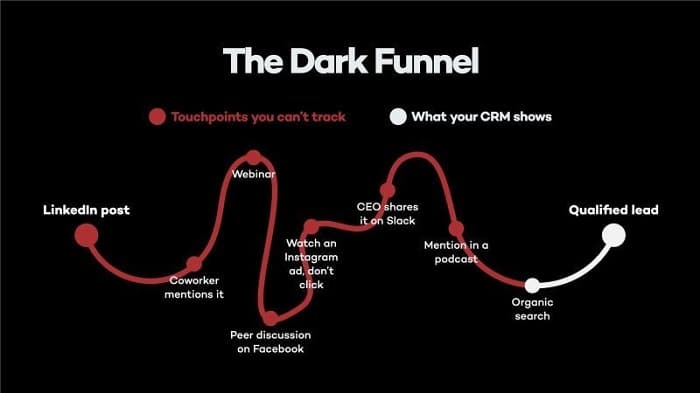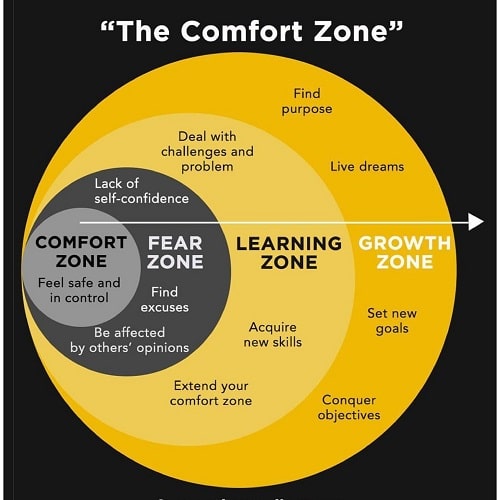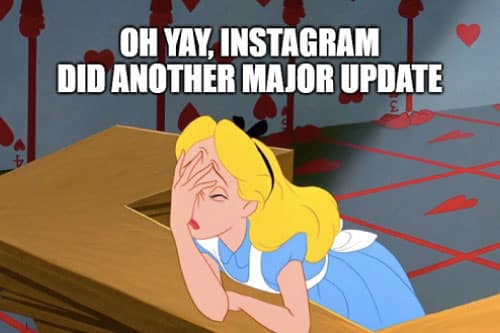In this article on Marketers & Mental Health, we review how to tame four common stress triggers that marketing professionals face: Proof of ROI, Rejection, Tool Updates, and Never-Ending To-Do Lists.
The marketing industry is a hotbed of stress triggers, which can put a huge strain on your mental health if you’re not prepared to tame them.

Any good mental health expert will tell you this: if you can’t change the circumstances, all you can do is change how you react to them. And lordy, that should be every marketer’s mental health motto. Get a tattoo, crochet it on a pillow, make it your screensaver. Just embrace it.
Marketing EVOLVES, every single day, in ways that are often unwelcome. Things that were once free now have a price. Platforms that were once popular are now passé. Tracking and targeting for ads now have fences that can shut you out. New marketing channels pop onto the scene without warning. Stuff changes all the time. And change causes stress. And the stress is relentless. I’ve heard marketing compared to a never-ending carnival game of whack-a-mole, and it’s not an outrageous analogy.
But marketing can also be exhilarating, rewarding, and immensely satisfying. Marketers are entertainers. We are educators. We are influencers. And we possess – if we’re good at our jobs – an insightful perspective into what makes people tick and how to push their buttons.
So why are we, as an industry, generally so unsuccessful about managing how WE tick? We live in triage mode, crisis mode, gearing-up mode, and launch mode. Why aren’t we more conscious of adding a few modes to our professional lives that are kinder to our mental health?
Here are four of the most common stress triggers in marketing, and some thoughts on how you can tame them to foster better mental health. And it all starts with awareness.
Proof of ROI
The Stress Triggers
Your resources – both time and money – are precious and finite. Yet the quest to prove ROI for every marketing dollar spent goes unfulfilled. Should you put your dollars “here” because you can track clicks and trace sales, at the sacrifice of putting them “there,” which is more important but less or not trackable? These are constant, stressful choices for you.
But more than that…bosses and bean counters demand to see ROI before approving budgets. Few of them will equate a rise in sales with successful marketing unless you can show a direct link. And even fewer of them feel comfy with the fact that “increasing brand awareness” is a worthy marketing spend if it doesn’t lead to instant, tangible revenue.
The Taming Method
You need to embrace The Dark Funnel, and you need to educate all your stakeholders on it. This visual should hit home for any marketer (and hat tip to The F Company for creating it):

Faith in the dark funnel is critical for every marketer. Some people still print out travel articles they see and stick them in a “bucket list” folder. Two years later they visit your hotel or destination from an article in that folder, and how will you know that article was the origin? You won’t. But that sort of thing happens all the time. Faith in the dark funnel is a stance you must cultivate…and champion. Marketing is a cumulative endeavor. You can’t just do ONE thing. A litany of things must be deployed to penetrate awareness and incite action. You won’t be able to track them all, but they ALL matter. So educate your stakeholders. Show this visual at every budget meeting. Remind them that the leads and sales they ultimately see are only the final step on a long and necessary runway.
And remember: you can’t find love on a spreadsheet. And getting folks to love your brand is priceless.
Rejection
The Stress Triggers
Social posts go unopened. Emails go unread. Ads get skipped. Media pitches get ignored. Shall I go on or is that depressing enough? We put our souls and creativity into our work and when it lacks response, the feeling of rejection is deflating. This is doubly true if you’re an agency marketer: you face rejection by your clients AND you face rejection by your marketing audience. Lovely. Why even get out of bed in the morning?
The Taming Method
Cultivate your resilience. Marketing feels SO personal to you, but to your audience, it’s just one more piece of noise vying for their attention. Their lack of response is not personal, and we all know that folks need to be told something around a dozen times before it starts to penetrate their awareness. And they may not even see 10 of those attempts because of clutter, algorithms, spam filters, and other obstacles.
So your job is to give them that repetition. The more you get up to bat, the more hits you get. Learn from your strike-outs. How could you swing differently next time? Or adjust your stance? The point is… change your perspective. It’s not rejection. It’s all just data collection and a foundation for opportunities to change what you do next. One of my favorite quotes about resilience comes from the Harvard Business Review:

Every bit of so-called rejection is an opportunity. Now you know what didn’t work. So get up to bat again and find something that WILL work. It’s just a necessary part of the process.
Tool Updates
The Stress Triggers
Major software or platform updates. New marketing channels your competitors are already crushing. System upgrades. New boss brings new methods to the mix. It is beyond stressful to keep pace with the evolution of marketing tools. Even marketers highly specialized in one particular field face this. SEO experts blow a gasket whenever Google does a surprise update that requires them to shift their strategy, pronto. Imagine what marketing generalists feel like in that circumstance? Stressed, overwhelmed, and frequently…frozen. These things don’t feel comfortable to us, and change is hard to embrace, especially at the pace it’s thrown our way in marketing. We often view such things as disruptors (and not in a good way) that are hijacking our valuable time away from being productive. Learning curves and unfamiliarity drag us down.
The Taming Method
If tool updates are putting a strain on your mental health, you need to recast your thinking on what marketing is all about in order to tame this trigger. Marketing IS evolution. By its very nature, it MUST evolve because methods get stale and people get desensitized. You want to break through all that clutter you know exists? You won’t do it by remaining stagnant and using the same old tools the same old way. Annoying? Possibly. Reality? Definitely.
Marketers must not only embrace change…they must seek it proactively. And this isn’t easy because humans like to stay in their comfort zones, where we feel safe and in control. In our marketing comfort zone, things are predictable: the time each task will take, the steps each process has, the results we can expect to see. But y’all…that might feel comfortable but it’s not successful. To be successful, you need to get yourself into the growth zone:

As you progress through the fear zone (hardest) to the learning zone (a little easier transition), that next step into the growth zone is where marketing THRIVES. That’s where new ideas are born, calculated risks are taken, and the rewards are higher. Find a way to make peace with journeying from your comfort zone to your growth zone and stop thinking of tool updates as disruptions. They are the lifeblood of marketing.
And if social media updates are your particular nemesis, here are four tips to conquer your frustration when social apps get an overhaul.
BTW, hat tip to whoever created that comfort zone diagram, which I screen-shotted months ago and stuck in a folder in my phone. It had no credit listing on it and I have no idea where I stumbled across it. See “Proof of ROI” section above…I rest my case, but I wish they had put their logo on it.
Never-Ending To-Do List
The Stress Triggers
Is this category not self-explanatory? You’re…never…done. The work generates itself and never stops. If you’re in PR, there’s always one more journalist to pitch or one more angle to try. If you’re in visual design, there’s always one more version you know you’ve got in you to create. And if you’re a department manager or a solo marketer, it’s even worse. You put it on the website, but then you have to tweet it, post it, email it, promote it, pay for clicks, share onsite, educate staff…and keep doing it. Do we have the right video? Was the photo arresting enough? Is the copy punchy enough? If it’s not getting attention, how can you spin it a different way so it sounds new? It’s exhausting.
And here’s what happens: burnout, 12-hour days, and really stressful Sunday nights as you look at the week ahead. Also: to-do lists that mock you, task management software that dings you so much it’s become white noise, and a persistent, oppressive feeling you could be doing more.
But who sets the boundary on where “more” ends?
The Taming Method
You do. YOU set the boundary on where “more” ends. Marketing is – while lives aren’t usually at stake – a lot like triage in an emergency room. Not everything is a heart attack requiring a triple bypass. And at some point, patients you’ve tended for a long time need to be released. New projects, tasks, and opportunities fly at you daily and you’ve got to make quick judgment calls on what gets attention now, what can wait until next week, and what doesn’t merit a single brain cell of thought.
Let me be crystal clear and super blunt: you will never do all the things that “could” be done. So you need to get super choosy about selecting things that “should” be done. This is about managing expectations, both for yourself and for your boss/stakeholders. And this is about TIME, the only non-renewable resource in marketing.
Marketers are often people-pleasers and over-achievers, and that makes us want to do it all. But that’s physically, emotionally, and mentally impossible. Yet, setting boundaries for ourselves – hours worked in a week, limits on campaign legs to pursue, tasks we agree to take on – is something that many marketers find incredibly difficult. So, if that’s you, here are a few resources to help you out:
Learn how to stop chronically overcommitting your time here.
Learn how to recast your time to spend it more productively here.
And learn how to embrace JOMO – the Joy of Missing Out – here.
Overall, there’s no denying that marketing can have a strong negative impact on your mental health unless you learn to tame the stress triggers. Awareness is key: what are YOUR stress triggers and how can you tame them? Of course, the four stress triggers explored above are just a few of the most common. Because if I listed them all, that would make this article way too long to read… and that would only stress you out more. 😉
 get travel marketing tips
get travel marketing tips 






